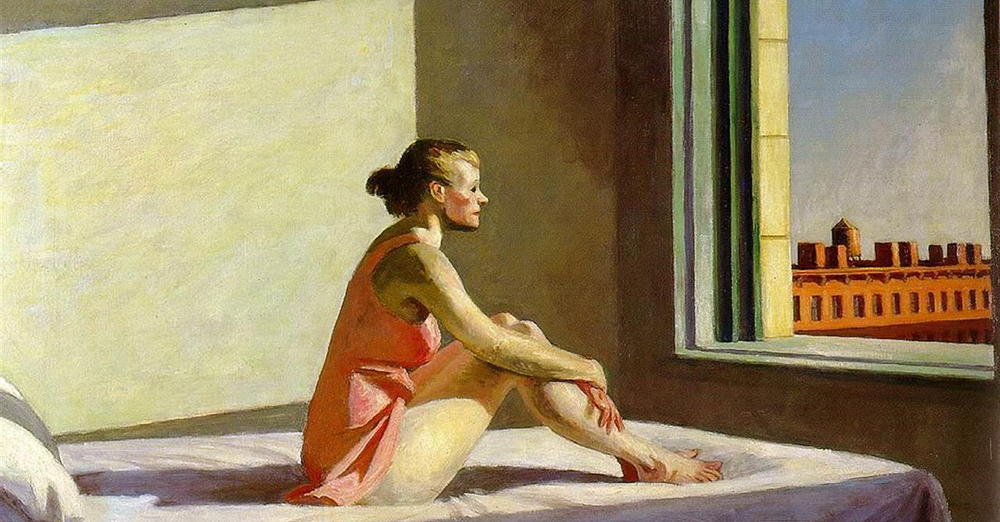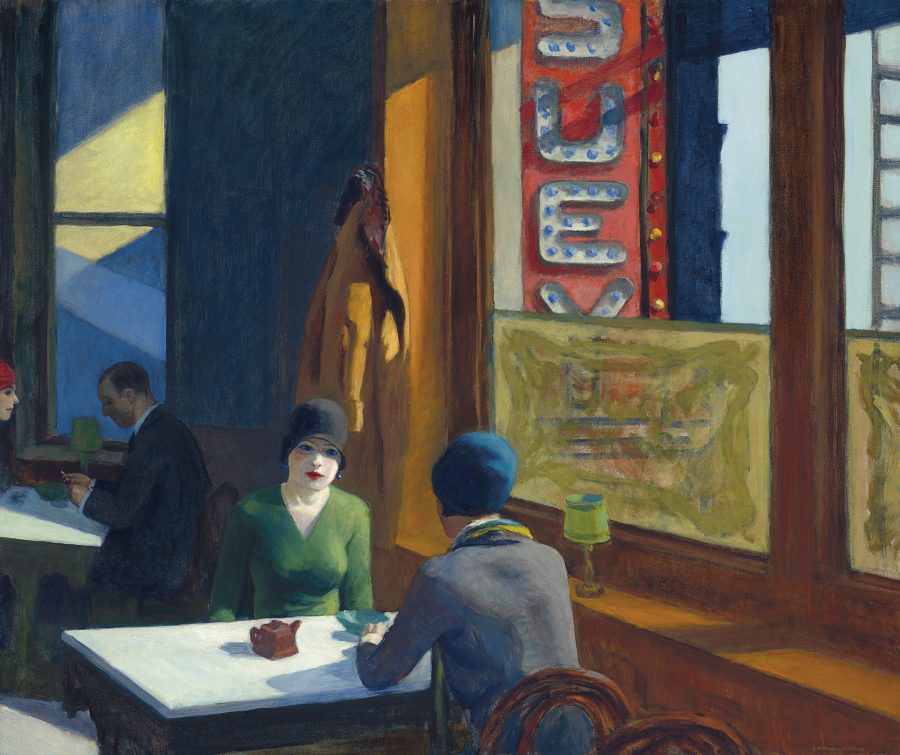The Fondation Beyeler in Basel will host Hopper’s iconic artworks from January the 26th. At the base of the artist’s creative imagination is the urban view of American landscapes. Like painted scripts, Hopper’s works contain infinite possible interpretations.
The imaginative painting
Edward Hopper, class 1882, was called “the silent witness of America”. However, this designation does not perfectly correspond to the pictorial personality of the New York artist. Hopper paints in an era of unstoppable modernization. With TV, advertising, and massive consumerism that began to develop in those years, Hopper embraced an opposite type of message and artistic intent.

Hopper’s works seem suspended in an unreal and melancholic atmosphere. For this reason perhaps, within his works, Hopper seems to freeze his figures. It is no coincidence that the men and women protagonists of his paintings always look elsewhere.
“No amount of skillful invention can replace the essential element of imagination.”
Edward Hopper
Despite the great pictorial capacity that brings him closer to realistic painting, Hopper’s is an art of the dream that arouses a state of tension in the viewer. In leaving room for the viewer’s imagination, Hopper’s American landscapes present an apparently harmonious scene. However, something intangible immediately elicits conflicting perceptions.
“Great art is the outward expression of an inner life in the artist, and this inner life will result in his personal vision of the world.”
Edward Hopper
During his career, Hopper painted 366 works, many of which are now in the most important American museums. When a work by the New York artist is on the market, in most cases it establishes auction records. In 2018, for example, “Chop Suey” was purchased for 81 million euros. Since 2005, eight other paintings by the artist have reached sales amounts between 7 and 29 million euros.
Edward Hopper on view
The one at the Fondation Beyler in Basel is an unmissable event. The museum will host 67 works from the finest galleries and international collections.

Edward Hopper’s art has influenced the imagination of generations of artists, even those from other artistic fields. Direct references to his paintings are for example in Hitchcock films, such as Rear Window and Vertigo. Indeed, the perspective, the light and the placement of the figures make his works almost cinematographic. It is no coincidence that numerous directors have admitted that they were inspired by Edward Hopper’s artworks to recreate particular atmospheres and suggestions.
Ridley Scott revealed that he took inspiration from Hopper to obtain particular atmospheres for some scenes of Blade Runner. Finally, Woody Allen reproduced the view of the “Queensborough bridge” in the initial sequence of Manhattan.
The exhibition stems from the collaboration between the Fondation Beyeler in cooperation with the Whitney Museum of American Art. This is the major repository of Hopper’s work.
In addition, a 3D short film by Wim Wenders will give further insight into the very peculiar art of the American artist.